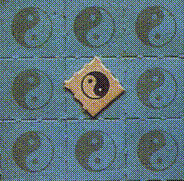Five years ago history was made in Parsons, Kansas where the last roll of Kodachrome was processed at Dwayne’s Photo Shop, the only Kodak certified processor of Kodachrome film in the world as of 2010. The final roll of 36-frame Kodachrome to be manufactured was tracked by National Geographic; it was shot by photographer Steve …
Tag: National Geographic
Sep 30 2010
Alaska Walruses Without Ice
“an unusual gathering on a barrier island in Alaska. ” They’d normally be out on the floating ice after foraging, but there is no ice this year near their feeding grounds. Arctic sea ice is at the 3rd lowest point in recorded history.
Walruses Swarm Beaches as Ice Melts
National Geographichttp://news.nationalgeographic…
Biologists with the USGS say the situation can be very dangerous because walruses are easily startled, and can stampede. Some walruses, particularly calves and juveniles, can get crushed to death by larger walruses moving about.
Feb 18 2010
NASA confirms accelerated Glacial Melting BELOW the Surface.
Most of us know that Most Glaciers ARE Melting. Here are some stats:
A Reply to the Attacks on Climate Change Science
The science is sound and the glaciers are shrinking, says the Union of Concerned Scientists.
02/10/2010
A 2005 global survey of 442 glaciers from the World Glacier Monitoring Service found that only 26 were advancing, 18 were stationary, and 398 were retreating. Overall, about 90 percent of the world’s glaciers that scientists have measured are shrinking as the planet warms.
http://www.greentechmedia.com/…
And here’s what a shrinking glacier looks like using time-lapse photography, to speed up the action …
Nov 03 2009
Trippin Tuesday: Inside LSD (Updated)

from Erowid image vaults
Just wanted to give a heads up that National Geographic’s Explorer series will be premiering, Inside LSD, tonight (Tuesday 11/3) @ 7 PM and 10 PM; also showing on Sat Nov 7 at 4PM and Tues Nov 10 at 3 PM (TV Schedule).
…as the 40th anniversary of Woodstock fades in the rearview mirror, the National Geographic Channel is giving LSD a second chance, as it were. On Tuesday night in its Explorer series, INSIDE LSD talks to scientists and therapists who are examining the narcotic (sic) anew, trying to learn specifically how it works in the brain and whether it might have uses that Jerry Garcia never envisioned. The program, as its narrator, Peter Coyote, says, is an attempt to separate the myth from the molecule.
One segment explores the possibility that some form of LSD could help sufferers of cluster headaches, and its footage of one such sufferer in the throes of an attack leaves you wishing the poor fellow relief no matter where it might come from. In another part of the program, a woman with terminal cancer talks about how an LSD trip helped her break free of the anxiety about death that was consuming her final months.
(note: I put “sic” after narcotic because LSD is not usually classified as such, medically or legally.)
Mar 25 2009
Soiling the Planet Wins a Pat on the Back
Help me figure out the lesson that we should draw from an event this week. The Alberta Government, central to perhaps the most disastrous project in North America, is receiving an award for leadership at an Environment Forum. Consider me confused …
The Aspen Institute and National Geographic are banding together to give out six awards as part of the Aspen Environment Forum.
A ceremony to recognize and reward excellence for those making a real and concrete contribution to innovation, implementation, and communication of energy and environmental solutions.
Amid the awardees are some heroes, but some are far from heroes. The “government” awardee: The Province of Alberta, Canada. Yes, that Alberta government which is facilitating what has been called the most destructive project on Earth: devastating Alberta in the rapacious Tar Sands projects. And, this is occurring in the same month that National Georgraphic ran The Canadian Oil Boom: Scraping Bottom.
